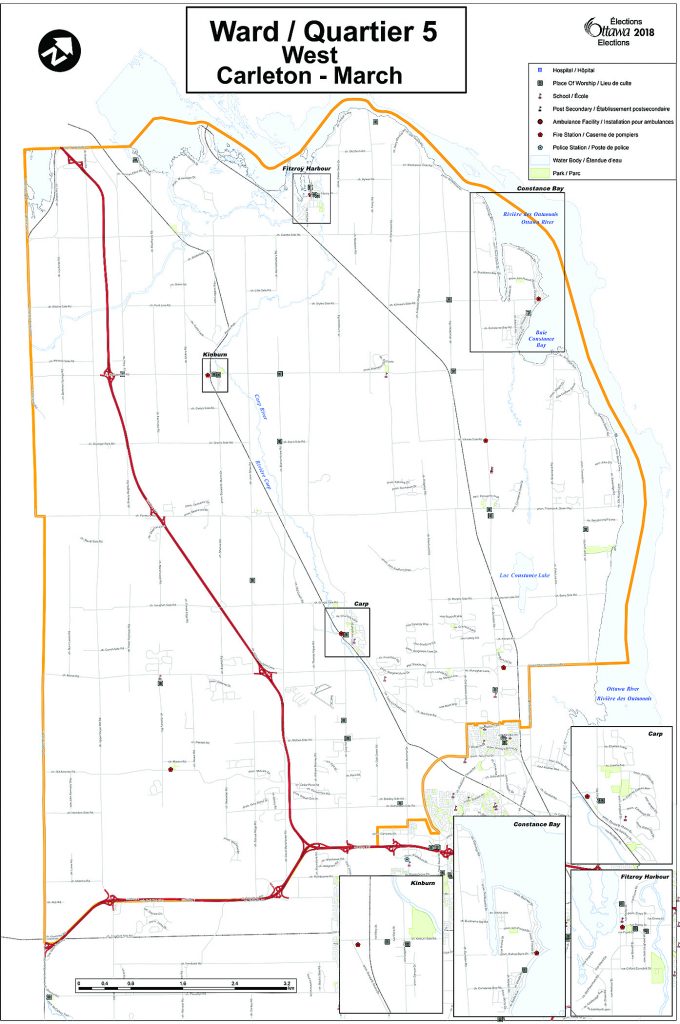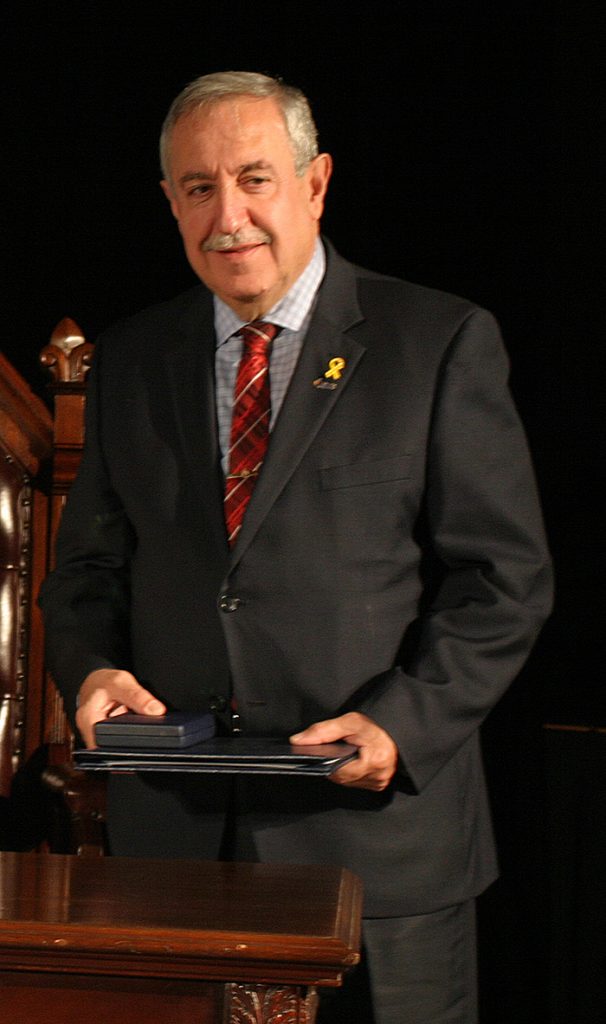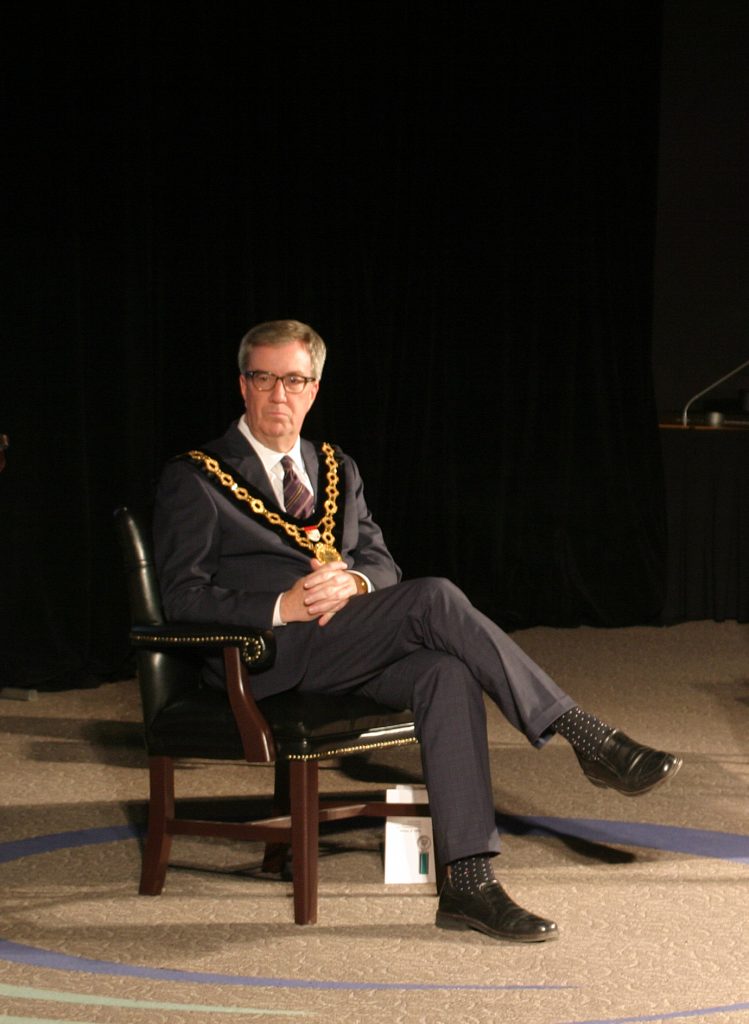El-Chantiry, mayor talk boundary review
WEST CARLETON – “We are large, we are diverse, we are different.”
Those were Coun. Eli El-Chantiry’s words when asked about the City of Ottawa council project to review ward boundaries last Friday.

El-Chantiry spoke to West Carleton Online last Friday (June 7), suitably enough, from the Mayor’s Rural Expo at City Hall, on the proposed boundary review and what it might mean to West Carleton residents.
On June 4, the Finance and Economic Development committee approved a staff recommendation to undertake a request for proposals to retain an independent consultant to review the boundaries of Ottawa’s 23 wards. The outcome for the request for proposals won’t be brought forward for consideration until the 2020 draft budget.
The mere mention of ‘boundary review’ often sends shivers down the backs of rural residents no matter where they live in the city – a city that is 81 per cent rural.
El-Chantiry says he, and all West Carleton residents, saw the effect when the provincial and federal ridings changed during the last elections to get rid of Lanark County and include a large portion of Kanata.
“Yes, you’re right, I have been around for both reviews,” El-Chantiry said. “There is no appetite to reduce the rural ward. As you can appreciate my ward, West Carleton-March is larger than the City of Calgary by 50-square-kilometres. It takes me an hour and 15 minutes to go from one end to the other. We are a very diversified ward. Farmland, agriculture, you name it. We have growth in small towns, rural economic development, so to suggest amalgamation or get lumped with some urban residents, that would really lose the flavour, not the identity so much, but the culture of West Carleton.”

“I think some folks see changing the boundary, whether provincially or federally, you become the small percentage of an urban riding,” he said. “You say oh my God the only identity we have right now, the way we are and who we are, is within the municipality. I can see why they would be concerned and quite honestly, I do share that concern. I don’t have to tell you we saw how different levels of government act when we had the floods or when we had the tornado. Being the local representative of the community and you are from that community, it makes a hell of a lot of difference when you get representation. All of West Carleton-March doesn’t make up 20 per cent of the riding now, because we are 27,000 and Kanata is 110,000 or 120,000. So, it’s a concern.”
El-Chantiry doesn’t expect that to happen with the municipal ward boundary review.
“In discussion with the mayor and my other colleagues, we believe, the last time we learned from that experience, PEI, doesn’t have as much population as one riding in Toronto or in Ottawa but they still need fair representation,” he said. “We have a case law in the Supreme Court of Canada recognizing representation. I’m not too worried about it at this point. Nevertheless, we have to keep an eye on this. I share the sentiment based on my experience, there’s a big difference in representation when you are from the community, so that’s the message I will be bringing to the table.”
Mayor Jim Watson also spoke to West Carleton Online about ward boundary review at the Mayor’s Rural Expo. Watson says he doesn’t want to add politicians through this process or lose the rural identity.
“I indicated, and the committee supported my recommendation, that we not add councillors because we don’t want this to be an exercise to add more politicians,” Mayor Watson said. “I’ve never had anyone come up to me and say please add more politicians. So, what we’re trying to do is rejig the balance where a ward like Barrhaven has 50 or 60,000 people and another ward might have 25 or 30,000.”
West Carleton is the smallest ward, population wise, and sits next to Kanata North ward which has a population of around 37,000. The mayor says his goal through this process includes keeping rural wards rural.

“So, can we tweak it and at the same time keep the rural character of the four rural wards? I’m very much committed to that,” Watson said. “So, it may mean a portion of one ward adds on to another ward, but I would very much want to ensure the majority of the people in a rural ward are rural residents.”
El-Chantiry says he believes the mayor.
“I’m not too, too worried at this time, it’s too soon, we just authorized the hiring of a consultant to start the process but frankly I don’t think it will be an issue, but nevertheless I will keep my eye on it,” El-Chantiry said. “The mayor said it time and time again, we are not really tackling the rural wards. We are large, we are diverse, we are different. Some areas have a bigger population, but you can visit the entire ward in 10 or 15 minutes. If I have one event in Corkery and another event in Fitzroy of Galetta, you’re talking about an hour drive especially in the winter time.”
El-Chantiry says public input will be a big part of the process.
“Absolutely, the city is hiring a consultant to start the process,” he said. “I’m not too, too worried at this time, but none the less, it’s too soon, we just authorized the hiring of a consultant to start the process. Frankly I don’t think it will be an issue, but I will keep my eye on it.”
City staff said in their report to council, the two-year ward boundary review process would include broad public consultation and research, followed by a final report with any proposed changes to the ward boundaries in time for the next municipal elections in 2022.



